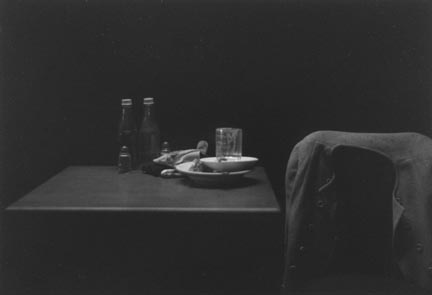About the Photographer
DeCarava, Roy
American, 1919-2009
Roy Rudolph DeCarava was born in New York City's Harlem, on December 9, 1919. From 1938 to 1940 he studied painting at Cooper Union Institute, from 1940 to 1942 painting and printmaking with Elton Fax at the Harlem Art Center, and drawing and painting with Charles White at George Washington Carver Art School in 1944. He originally purchased a camera to document his work in printmaking, but by 1949 photography itself was his sole artistic focus. He began photographing in the streets of Harlem, specifically capturing Black daily life.
His first photography exhibition was in 1950 at Mark Pepper's Forty Fourth Street Gallery where Edward Steichen purchased three photographs for the MoMA's collection. Soon thereafter, DeCarava started to experiment with a darker tonal range. His studies of the New York jazz world, begun a few years later, further developed his penchant for dark printing. While the deep tones in his pictures sometimes push the edge of legibility, both true blacks and true whites are rare.
In 1952 DeCarava became the first Black recipient of a John Simon Guggenheim Memorial Fellowship. At first rejected by publishers, photographs from this project were eventually published with the help of Langston Hughes in 1955 as The Sweet Flypaper of Life. Shortly thereafter, DeCarava opened, A Photographer's Gallery, one of the first galleries in New York devoted to photography, which would feature exhibitions of Bernice Abbott, Harry Callahan, and Minor White. At the same time, he began a series on jazz musicians that would occupy him for a decade.
In a series of taped interviews with Sherry Turner DeCarava (published in Roy DeCarava Photographs), Roy Decarava had much to say about his 1956 piece Dancers, uptown 'club dance,' New York:
"This photograph was taken at a dance of a social club at the 110th St. Manor at Fifth Avenue...these two dancers who represent a terrible torment for me in that I feel a great ambiguity about the image because of them...The problem comes because their figures remind me so much of the real life experience of blacks in their need to put themselves in an awkward position before the man, for the man; to demean themselves in order to survive, to get along. In a way, these figures seem to epitomize that reality. And yet there is something in the figures not about that; something in the figures that is very creative, that is very real and very black in the finest sense of the word. So there is this duality this ambiguity in the photograph that I find very hard to live with. I always have to make a decision in a case like this – is it good or is it bad? I have to say that even though it jars some of my sensibilities and reminds me of things that I would rather not be reminded of, it is still a good picture. In fact, it is good just because of those things and in spite of those things. The picture works."
DeCarava ran the Kamoinge Workshop for young Black photographers from 1963 to 1966. In 1969 he refused to be a part of the Metropolitan Museum of Art's exhibition Harlem on My Mind, critiquing its conception of African-American artists and its marginalization of photography as an art form. He began teaching at Hunter College in New York City in 1975, where he became a full professor of art. In 1992 Wesleyan University awarded him the honorary degree of doctor of fine arts. In 1996 The Museum of Modern Art in New York held a retrospective of his work.




